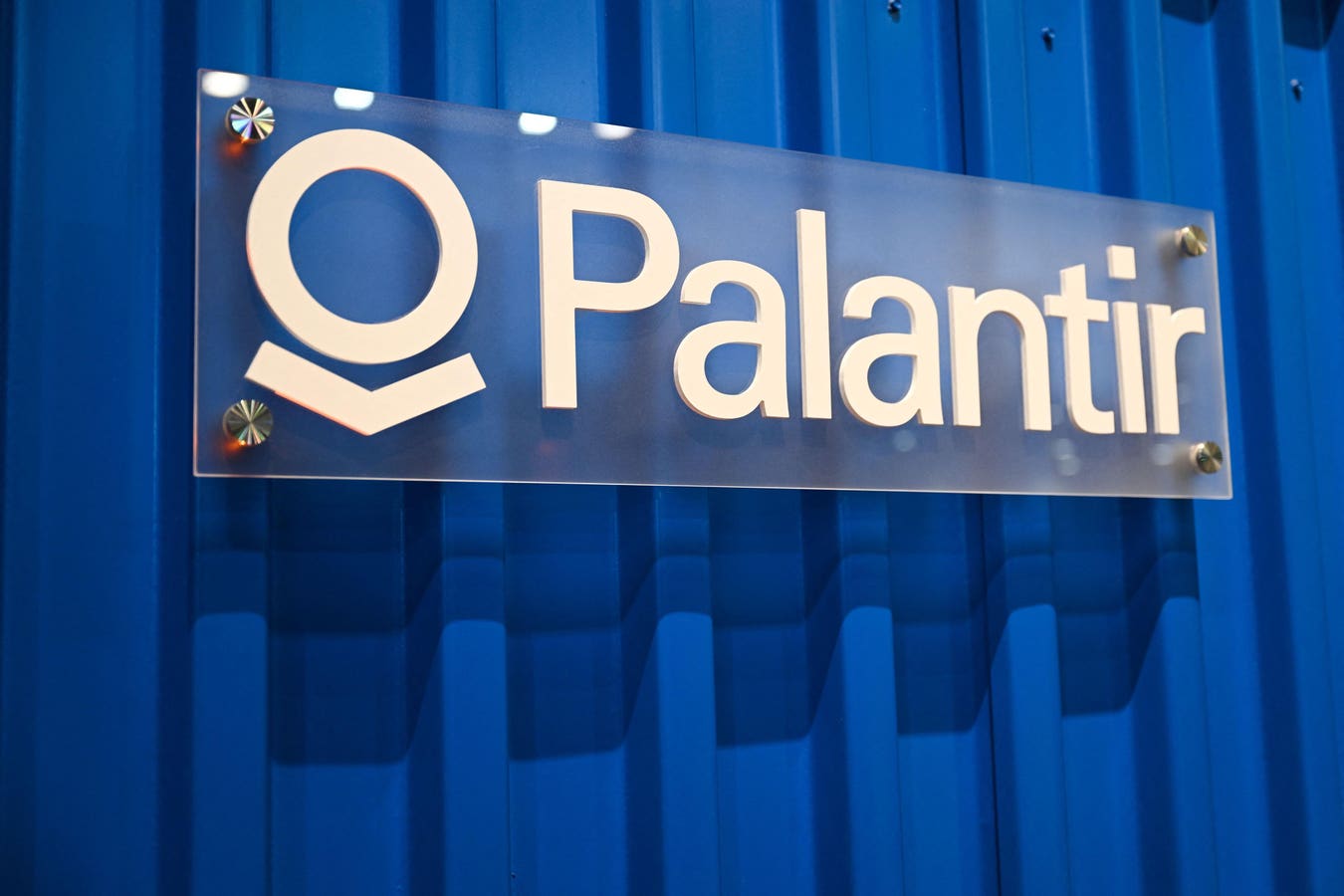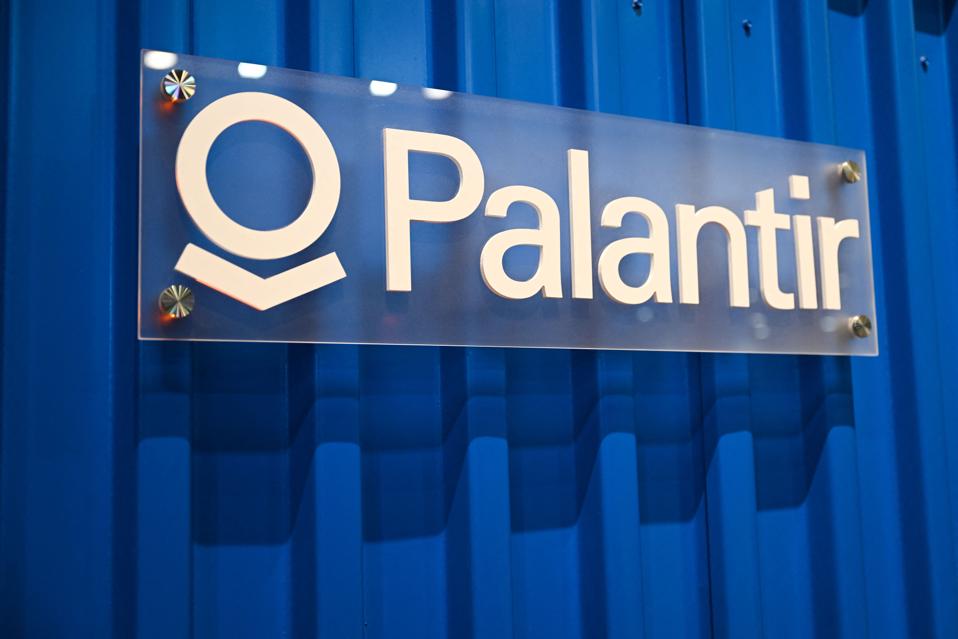Palantir Technologies stock (NASDAQ: PLTR) has been one of the biggest winners over the past year, surging more than 5x and recently trading near $180 per share. The rally has been fueled by surging interest in generative AI, a string of large government contract wins, and ongoing geopolitical instability, which tends to drive demand for the company’s tools. While the operational momentum is clearly solid, investors should pay close attention to the risks. History shows Palantir stock can fall hard as sentiment shifts.
The Palantir Technologies logo is displayed on a shipping container at the companys booth during the Consumer Electronics Show (CES) in Las Vegas, Nevada on January 5, 2023. (Photo by Patrick T. Fallon / AFP) (Photo by PATRICK T. FALLON/AFP via Getty Images)
AFP via Getty Images
Valuation Risk
The elephant in the room for Palantir stock has been its valuation. The stock trades at 100x estimated 2025 revenues. You read that right. 100x sales. And 280x forward adjusted earnings. These multiples leave little margin for error. These valuations price-in sustained hyper-growth rates and margin expansion for many years, a feat few tech companies have managed without meaningful drawdowns. Sure, Palantir’s growth is strong, with sales projected to rise 45% this year and by another 34% next year, per consensus estimates. But even other high growth AI names, such as recently listed Figma, which are growing at similar rates, are trading at cheaper multiples. See How Figma Stock Doubles To $160
Government Contract Dependence
Palantir’s government segment offers scale and credibility, but it also concentrates risk. Over the last quarter, U.S. government revenues were up 53% year-over-year to $426 million. Government contracts tend to be lumpy and unpredictable, making future growth harder to forecast. Moreover, the Trump administration is pursuing a strategy of de-escalating global tensions – including efforts to mediate between Ukraine and Russia and address the Israel-Palestine conflict. While these initiatives support global stability, they could reduce demand for Palantir’s software, which often sees higher uptake during periods of geopolitical uncertainty. With a heavy reliance on federal contracts, Palantir remains exposed to political risk as well. Shifts in government priorities, budget cuts, or contract losses could meaningfully impact its revenue trajectory and weigh on the stock.
Commercial Growth Uncertainty
We believe that Palantir’s long-term story hinges on its commercial business, primarily through its Foundry platform. U.S. commercial revenue was up nearly 2x over the last quarter, but there are challenges here as well. The company’s software involves large contracts with complex, costly implementations and highly customized deployments, which could limit its appeal to small and mid-sized businesses. Breaking into that broader market may require a different go-to-market model. This is something Palantir isn’t currently optimized for. The commercial business hasn’t been scaling as quickly in international markets, as well. Without sustained commercial traction, the company’s growth engine could remain pretty reliant on government spending.
Macro & Market Risks
Palantir’s stock performance is sensitive not only to company-specific developments but also to broader macroeconomic and sector dynamics. The U.S. job market is indeed showing signs of cooling down, with fewer jobs added than expected and a decrease in job openings over the last month. High tariffs on key trading partners and concerns about economic growth could also prove a headwind for corporate customers. Slower economic growth, protectionist trade policies, investor rotation away from high-growth stocks in downturns, and fluctuating enthusiasm for AI could collectively create headwinds for Palantir’s stock and commercial prospects in the near term. See how Palantir stock falls to $80.
Historical Volatility
Palantir stock’s past performance underscores its vulnerability. Consider 2022: Palantir stock lost over 70% of its value within a few quarters – falling from $18.53 in January to $6.00 by December. By comparison, the S&P 500 declined roughly 25% over the same period. To its credit, Palantir fully recovered to its pre-crisis peak by July 2023, and since then, the stock has surged to a high of $180. The pattern shows that when the tide turns, PLTR can fall faster and further than most large-cap peers. For investors, that means gains can be sizable, but so can losses. Our dashboard How Low Can Stocks Go During A Market Crash captures how key stocks fared during and after the last six market crashes.
Not too happy about the volatile nature of PLTR stock? The Trefis High Quality (HQ) Portfolio, with a collection of 30 stocks, has a track record of comfortably outperforming the S&P 500 over the last 4-year period. Why is that? As a group, HQ Portfolio stocks provided better returns with less risk versus the benchmark index; less of a roller-coaster ride, as evident in HQ Portfolio performance metrics.


